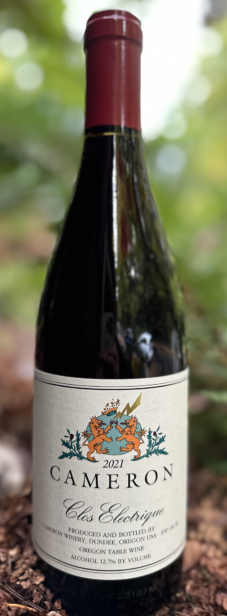Ask Dr. Science
From John, September 24th, 2012The End Game
Late September here in Oregon signifies the final stages of ripening. The red grapes have turned black (perhaps thats why the French call it Pinot black!) and the white grapes are starting to gain a yellow hue. These are sun-induced changes that protect the grapes from sun-burning which is essentially solar oxidation.
In red grapes these protective compounds are called anthocyanins and they absorb light in different parts of the spectrum. Pinot noir in particular tends to produce anthocyanins that absorb predominantly in the blue part of the spectrum (short wavelength) and therefore make wines that are very red in color (that is, they bounce back to your eyes that part of the spectrum which they do not absorb).
White grapes and particularly Chardonnay produce quercitin as an antioxidant. Quercetin is responsible for the yellow hue in the wine. These compounds that the grapes are currently synthesizing to protect themselves from oxidation will extract into the wines and will also protect you from oxidants in your environment.
Other changes are also afoot in the grapes. Components which the yeast will turn into volatile flavor components are being synthesized. Phenolic components, in addition to the anthocyanins, are being synthesized as further antioxidants. Acidity is starting to drop though it is still quite high at this point.
And of course sucrose (what we call table sugar) is cascading down the vascular system from the leaf canopy. When it arrives at the berry, the grapes have devised a very clever system for pushing it into the berry against an increasing concentration of sugar within. It simply breaks the sucrose into 2 pieces (“hydrolysis”) as it enters the berry, thus effectively producing a different looking substance than what is outside. It thus essentially maintains a gradient for sucrose to flow into the berry.
I like to think at this time of year that the grapes are truly working for me, synthesizing things that will smell good and taste good, once the yeasts enter into the equation.
Recent News & Rants
old vines, old wines & an old winemaker
One of the advantages of being an “old-timer” in the world of enology and viticulture is that our vines have aged along with me. It is a well known phenomenon in the world of wine that old vines tend to produce superior wine. A recent tasting of 18 vintages of Clos Electrique Blanc magnums proved that adage to be true! Overall, the consensus was that 8-14 years of aging seems to be the absolute “sweet spot” for this magnificent vineyard.
There’s More... >What do winter cold snaps do to the vineyard?
With climate progressively changing, one phenomena that is starting to occur fairly regularly is an occasional bout of intense winter cold weather. In January 2024, temperatures descended to as low as 4F in high altitude vineyards. Read on to learn how grapevines respond to this stress.
There’s More... >Cheers to a fantastic year ahead!
Bottles of Cameron Winery wine that are currently for sale.
2022 Dundee Hills Chardonnay, 2021 White Oak Pinot noir, 2021 Abbey Ridge Pinot noir, 2021 Clos Electrique Rouge, 2021 Clos Electrique Blanc, 2022 White […]
There’s More... >


